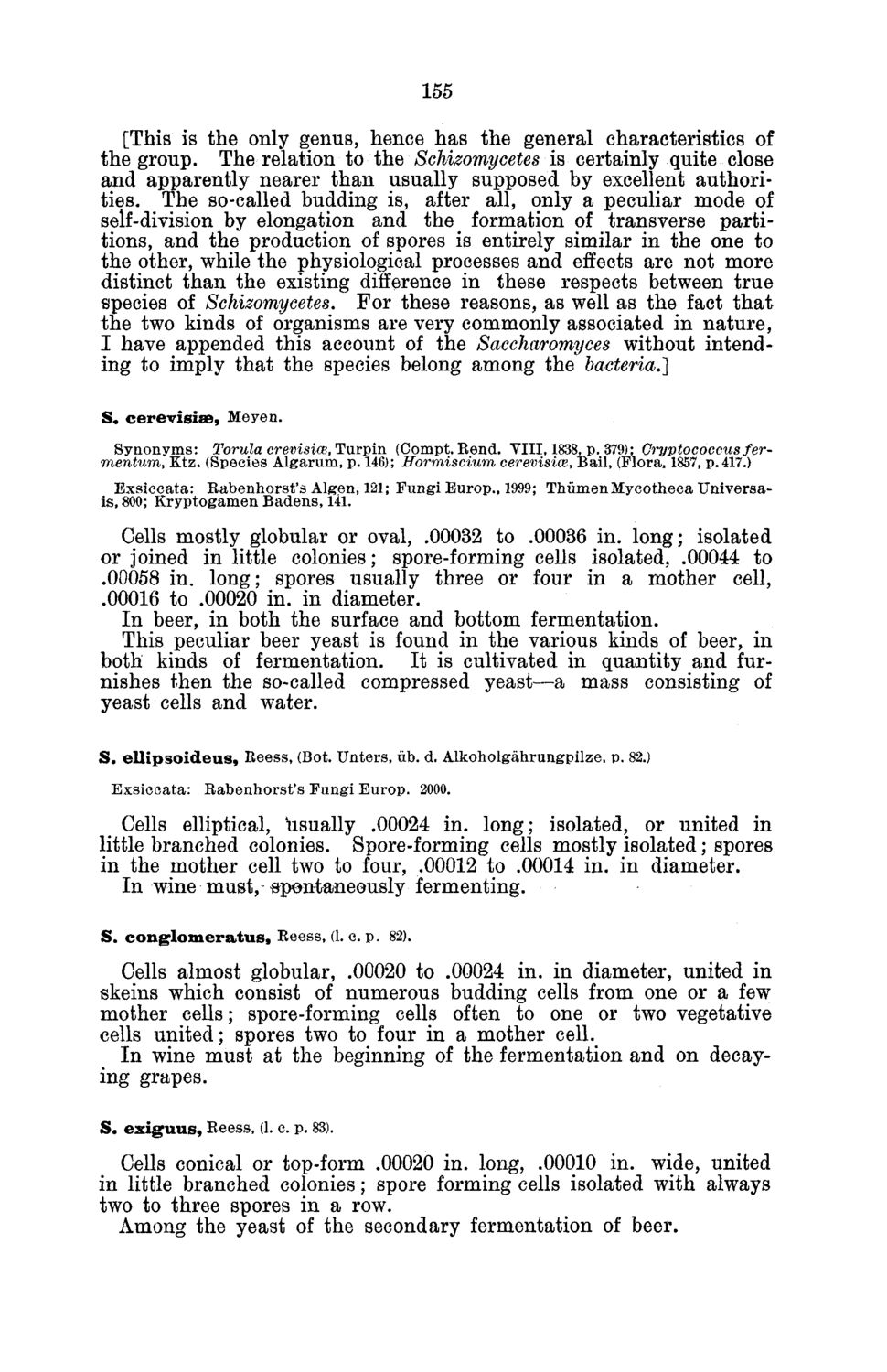| |
| |
Caption: Board of Trustees Minutes - 1882
This is a reduced-resolution page image for fast online browsing.

EXTRACTED TEXT FROM PAGE:
155 [This is the only genus, hence has the general characteristics of the group. The relation to the Schizomycetes is certainly quite close and apparently nearer than usually supposed by excellent authorities. The so-called budding is, after all, only a peculiar mode of self-division by elongation and the formation of transverse partitions, and the production of spores is entirely similar in the one to the other, while the physiological processes and effects are not more distinct than the existing difference in these respects between true species of Schizomycetes. For these reasons, as well as the fact that the two kinds of organisms are very commonly associated in nature, I have appended this account of the Saccharomyces without intending to imply that the species belong among the bacteria.] S. c e r e v i s i s e , Meyen. Synonyms: Torula crevisim, Turpin (Compt. Rend. VIII, 1838, p. 379); Cryptococcus fermentum, Ktz. (Species Algarum, p. 146); Hormiscium cerevisice, Bail, (Flora. 1857, p. 417.) Exsiceata: Rabenhorst's Algen, 121; Fungi Europ., 1999; ThumenMycothecaUniversais, 800; Kryptogamen Badens, 141. Cells mostly globular or oval, .00032 to .00036 in. long; isolated or joined in little colonies; spore-forming cells isolated, .00044 to .00058 in. long; spores usually three or four in a mother cell, .00016 to .00020 in. in diameter. In beer, in both the surface and bottom fermentation. This peculiar beer yeast is found in the various kinds of beer, in both kinds of fermentation. It is cultivated in quantity and furnishes then the so-called compressed yeast—a mass consisting of yeast cells and water. S . e U i p s o i d e u s , Reess, (Bot. Unters, iib. d. Alkoholgahrungpilze, p. 82.) Exsiceata: Rabenhorst's Fungi Europ. 2000. Cells elliptical, usually .00024 in. long; isolated, or united in little branched colonies. Spore-forming cells mostly isolated; spores in the mother cell two to four, .00012 to .00014 in. in diameter. In wine must,-spontaneously fermenting. S. c o n g l o m e r a t u s , Reess, (1. c. p. 82). Cells almost globular, .00020 to .00024 in. in diameter, united in skeins which consist of numerous budding cells from one or a few mother cells; spore-forming cells often to one or two vegetative cells united; spores two to four in a mother cell. In wine must at the beginning of the fermentation and on decaying grapes. S . e x i g u u s , Reess, (1. c. p. 83). Cells conical or top-form .00020 in. long, .00010 in. wide, united in little branched colonies; spore forming cells isolated with always two to three spores in a row. Among the yeast of the secondary fermentation of beer.
| |